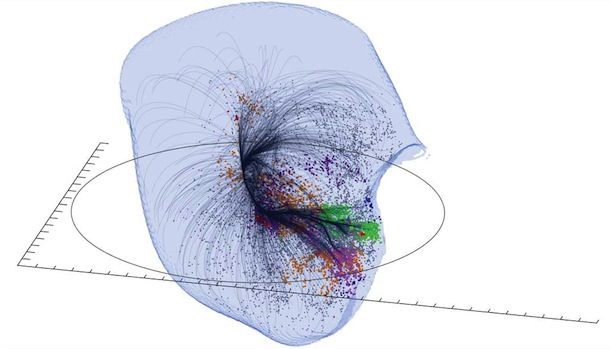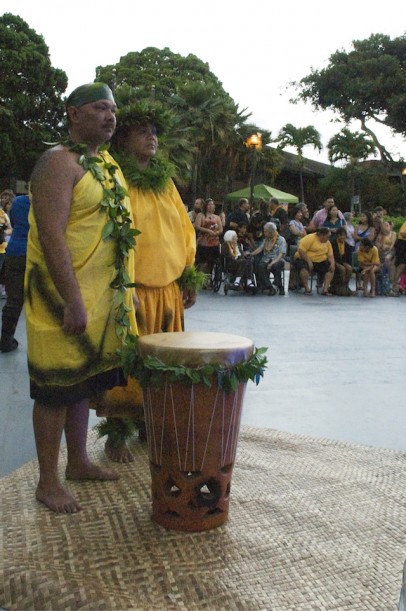By Christina Parlin, Kapi‘o Staff Writer
Since galaxies in the cosmos are not uniformly laid out but rather seemingly tossed into the darkness like a handful of confetti, it is hard to discern where to start exploring.

A View of the Laniakea Supercluster. Credit: SDvision interactive visualization software by DP at CEA/Saclay, France.
As Nawa’a Napoleon well knows, naming what you discover can be just as tricky. Na’waa, a Hawaiian language professor at KCC, is chair of the department of Languages, Linguistics and Literature (LLL).
Last year, University of Hawaii astronomer R. Bret Tully and a team of scientists used the Green Bank Telescope to determine that the Milky Way and some 8,000 surrounding galaxies are part of a larger system called a supercluster.
Video Credit: “Newly Identified Galactic Supercluster Is Home to the Milky Way” (National Radio Astronomy Observatory)
Defined by their component galaxies and galaxy clusters, superclusters are the largest known communities in the cosmos.
Before news of the discovery was published, KCC’s Napoleon was asked by Vice Chancellor Louise Pagotto to suggest a Hawaiian name for the supercluster.
“I was emailed saying Bret discovered this, and we are thinking about giving it a Hawaiian name — what would be your recommendation?” Napoleon said. “And I thought, ‘I don’t even know what a supercluster is.’”
Undaunted, Napoleon took a walk around campus and what might have taken a week or more to ponder instead came quickly. Inspired by the beautiful scenery around him, Napoleon found himself in receipt of the perfect name: Laniakea.
The name roughly translates to ‘immense heavens’. Napoleon explains that “lani” usually refers to “chief” or “heaven,” and “akea” is a variation of “wakea” which is the “Sky Father'” of the Hawaiian people. This variation is used to refer to anything above the land we walk on.

Nawa‘a Napoleon, with Lehua Gaison, chanted at the blessing of the Hawaiian star compass in front of ‘Ohi‘a building. Sept. 2011.
“I think for a lot of the things that I name, I never see it as myself who names it,” Napoleon said. “I let people know that I am really just the hand for my ancestors. I feel like it is my responsibility, my kuleana, to really give back to the area. It is not so much having prestige of naming something, but more of my responsibility to the land, and to my ancestors who walked this area back in time.”
Although not his original intention, many people have found unique connection to the name Laniakea. Napoleon said he has gotten much positive feedback from those in Tahiti, but more specifically, Rai‘atea.
“If you know Tahiti, you know of Rai‘atea, which when translated into Hawaiian is ‘Laniakea,’” Napoleon said. “So they really feel a part of the naming of the supercluster, as well.”
Nawa’a received many emails from those in Tahiti indicating how appropriate this name was for the people of Hawaiʻi, who have ancestral connections to Tahiti. Rai‘atea was a center of Tahitian voyaging in ancient times, and is considered the homeland of the Hawaiian people. In this way, the name is a tip of the hat to ancestral ties and to the place where navigating with the stars was taught and voyages were launched to Hawai‘i, where the land was cultivated and the people have flourished until this day.
For more about the discovery of the Laniakea Supercluster, see “Newly Identified Galactic Supercluster Is Home to the Milky Way,” at National Radio Astronomy Observatory (September 3, 2014). Tully et al. published their article in Nature: “The Laniakea supercluster of galaxies.”
